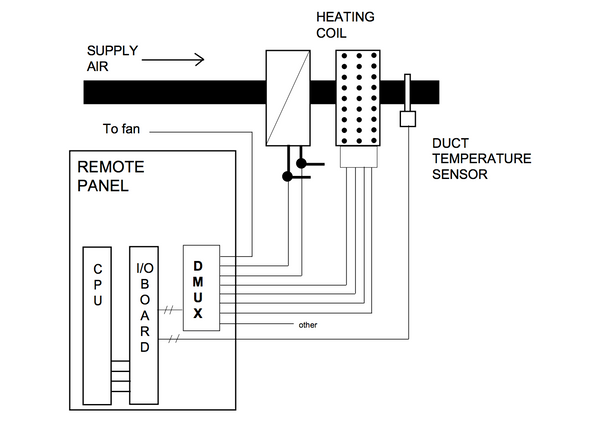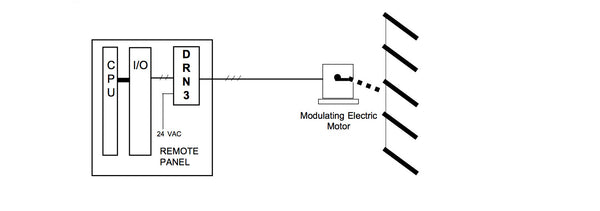Thermostats are important devices in millions of homes around the world providing the necessary comfort indoors all year round. Basically, a thermostat is a device that adjusts your heating system to the preferred temperature.
There are plenty of thermostats out in the market to choose from. Some people still prefer traditional thermostats while some like their smart counterparts. Traditional thermostats are still very capable of catering to your basic heating and cooling needs but there is no denying that smart thermostats offer a lot of conveniences since you can access them remotely keeping your house in perfect temperature while you are away. Most of them also allow you to heat specific sections of your home.

What Is Line Voltage?
Before we dive into line voltage thermostats, it is important to understand the term “line voltage”. Line voltage refers to the amount of voltage that is going through an electrical socket that then is used to power all our electrical appliances and devices.
Most electrical equipment will function at 120V or 240V which facilitates the way we use our appliances: just plug it in, and turn it on with no effort. When your home has line voltage wiring, it eliminates the need for any additional equipment such as transformers or extra hardwires. Line voltage thermostats, also known as a voltage thermostats, run on line voltage as well.
What Is a Line Voltage Thermostat?
A line voltage thermostat also referred to as high voltage thermostat, runs on direct line voltage and is commonly used to regulate baseboard heaters or any type of heating systems that work on direct electricity.
A line voltage thermostat often has two or four thick wires coming out of its back. If you want to know if your heating system is compatible with a line voltage thermostat, just check the back of your current one. If you have a line voltage system, the thermostat will have 2 or 4 wires coming out of its back. If it has more than four wires then your system is not compatible with line voltage and you should purchase a low voltage thermostat for your home instead.
Line Voltage Thermostats vs Low Voltage
Thermostats
Line voltage thermostats run on direct line voltage while low voltage thermostats which run on fuel like oil, propane, gas or other sources. Between the two, low voltage thermostats are the more common type and are typically used for central heating systems.
Just like what the name suggests, low voltage thermostats run on low voltage (24 volts) and because of this, the installation process is relatively safe - in fact, many homeowners can perform it themselves without hassle. On the other hand, installation of line voltage thermostats are more complicated and often needs professional help. This is because you are dealing with high voltage wires that can potentially knock you down, burn you, and even kill you.
If you have appliances like baseboard heaters, radiant heaters, or electric room heaters, low voltage thermostats are not suitable for them and you should buy a line voltage thermostat for these appliances.
Single Pole vs Double Pole
Line voltage thermostats have two variety: the single pole and the double pole. The single pole line voltage thermostat has two wires coming out of its back while the double pole one has four wires.
In electronics, "pole" refers to the number of separate circuits that the switch operates off one circuit. That means that a single pole thermostat operates on one circuit which means that the power to the unit can only run in one direction. This is the reason why single pole thermostat cannot be turned off, it can only be turned to low. The only way to turn it off is to shut the power from the breaker. One the other hand, double pole thermostats operate in two directional currents and they can be turned off completely.

How Do I Know If I Have a Line Voltage Thermostat?
It is important to know if you have a line voltage thermostat. You must get to know your heating system and check the voltage of your thermostat.
Learn about Your Home Heating System
There are numerous heating systems available on the market, and finding the right system for your home widely depends on your location and the requirements of your heating system. For example, if you live in a much colder climate, you will need a heater that will cater to your heating needs.
Your needs will be directly linked to how you are heating your home and whether you have a line voltage thermostat. If your home heater runs on electricity, then you most likely have an electric line voltage thermostat. On the other hand, if your home heating system requires ductwork and uses radiators, then you probably don’t have a line voltage thermostat.
Check the Voltage of Your Thermostat
To determine whether your thermostat is a line voltage thermostat, you should check the voltage:
- Voltage meter: Use a voltage meter to measure how much electric voltage runs through your thermostat. It is important to follow strict safety guidelines when using this method of investigation.
- Label: An easy and safe way to check your thermostat’s voltage is to simply read the label. If your thermostat is a line voltage thermostat, then the label will have some type of “high voltage” warning. The label typically will be visible and situated under the cover of high voltage thermostats.
Inspect the Wiring of the Thermostat
Another way to inspect your thermostat and identify your thermostat type is to inspect the wires. The wires of your thermostat are located inside a metal box called a “gang box”. If you can’t find a gang box, you might not have a line voltage thermostat.
When looking inside the box, you should thoroughly examine the wires that connect to your thermostat. The different colors can be red, black, or white, and there could be 2, 4, or 6 small wires. It is important to turn off the power from the circuit breaker that feeds into your heating system and thermostat before touching the wires to avoid a dangerous situation.
Smart Thermostats
Tradition thermostats were able to provide comfort to countless of homes for many years and there is no denying that going “smart” is the new trend to not only in heating but in other home devices. Smart TVs, smart speakers, smart refrigerators, smart lights, and any other appliance you can possibly think of. This is due to the rising popularity of the idea of smart homes, where homeowners can control every home device they have through voice command and artificial intelligence.
That means it that it is now possible to turn on the lights, lock the doors or adjust the thermostat just by using your voice!
People have different reasons why they would want a smart home but mostly, going “smart” is a great way to make your home more energy efficient.

Line Voltage Smart Thermostats
Smart thermostats have been in the market for several years now but did you know that the line voltage variety became available to the public only recently? This is because one in ten homes in the United States makes use of them and due to the small market size, manufacturers didn’t bother to make them.
Thankfully, there are now several line voltage smart thermostats available for you to purchase from several brands
Why Go Smart?
If you have a traditional thermostat that still works well, you might be wondering why you would need a smart one. Here are a few reasons to consider buying a smart thermostat for your line voltage system:
- Minimize energy usage
Smart thermostats are made and designed to be energy efficient providing only the needed heat then turns off when the ideal temperature is already achieved thus reducing energy consumption. According to a study conducted by Nest, thermostats reduce energy costs; there is ten to twelve percent savings on heating and fifteen percent savings on cooling. That's about $131-145 in savings a year.
- Scheduling
Line voltage systems are typically multi-zone systems which means that each thermostat works independently from the other. But adjusting all of your thermostats every morning and night is tiresome. With a line voltage smart thermostat, you can schedule these daily adjustments at the same time using their app which saves you a lot of time.
- Remote access
You can schedule a temperature change remotely with a smart thermostat because they usually have apps that can be installed on your mobile device. Some doesn't have an app, but you can access your devices through a web console. That means if you are away from home for a long time, you can still adjust and monitor your devices no matter where you are in the world!
Line Voltage WiFi Thermostats
People usually avoid WiFi-enabled smart home products because they require more energy. But with line voltage thermostats, you won't have this problem since they are connected to the main line of power. With a line voltage WiFi thermostat, the device directly connects to your WiFi router allowing you to control your thermostat remotely from your mobile device.
Looking for a good thermostat and other HVAC supplies? Visit Blackhawk Supply and browse through our wide-variety catalog.

